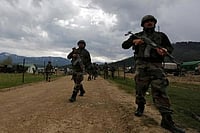Japan was struck by a powerful 7.6 magnitude earthquake on Monday, prompting major tsunami warnings that were later downgraded and lifted. Approximately 155 quakes have since shaken the country, resulting in damage to roads, buildings, and widespread power outages. The death toll has been estimated to be at least 48.
The geographical location of Japan makes it an earthquake-prone zone with hundreds of quakes hitting it every year and not all lead to casualties.
Last year, a 7.8 magnitude earthquake hit south-east Turkey near the Syrian border, killing over 50,000 people and causing extensive destruction. In 2015, an earthquake in Nepal, with a magnitude of 7.8, resulted in approximately 9,000 casualties. An earthquake of a relatively lower magnitude- 6.3- hit Afghanistan in October last year, claiming more than 2000 lives.
The question then arises, how Japan has tried to minimise the impact of so many earthquakes and what has changed over the years? The answer lies in its robust earthquake preparedness.
Japan’s earthquake preparedness
According to Reuters, Japan accounts for about 20 per cent of the world's earthquakes of magnitude 6 or greater, and each year experiences up to 2,000 quakes that can be felt by people.
Sitting amidst the "Pacific Ring of Fire," Japan grapples with the interactions of three significant tectonic plates, including the Pacific Plate beneath the Pacific Ocean and the Philippine Sea Plate. Positioned at this geological crossroads, the country becomes a focal point for the dynamic forces resulting from the continuous shifts in these substantial plates.
In Japan, earthquakes have become a part of people’s lives. Japanese infrastructure is designed to withstand major earthquakes and remain functional even in the immediate aftermath. Japan's strict building codes ensure that every home is constructed to endure seismic activity and its sophisticated early warning system provides crucial seconds to minutes of advance notice before strong shaking. Older buildings and critical infrastructure undergo retrofitting to meet current seismic standards.
Engineers focus on two primary resilience levels: the first aims to endure smaller earthquakes, typically experienced three or four times during a building's lifespan in Japan. At this level, any damage requiring repair is deemed unacceptable; the design should ensure the building remains undamaged. The second resilience level involves withstanding rare, extreme earthquakes. Beyond a certain magnitude, the goal shifts from preserving buildings perfectly to accepting any damage that does not result in human casualties.
From a young age, every child learns emergency procedures through drills and is aware of the protocol in emergency situations. While trains are also made earthquake resistant with seismic sensors installed to trigger a nationwide halt in the event of an earthquake, guaranteeing passenger safety.
Given Japan's susceptibility to tsunamis triggered by earthquakes, the country has implemented coastal barriers and warning systems to protect coastal areas. These systems include seawalls and early warning systems to evacuate residents.
What’s happening in Japan?
According to the officials, at least forty-eight people died in a major earthquake that struck central Japan on New Year's Day. From toppled buildings, sunken boats at a port to power outages in the middle of freezing overnight temperatures - the series of quakes have left a massive trail of destruction, as per several footages online.
Rescue efforts are underway as Prime Minister Fumio Kishida is swiftly directing emergency workers to provide essential supplies like water, food, blankets, and heating fuel.
The quake generated tsunami waves over a metre high yesterday, causing damage and a major fire, prompting a highest-level tsunami alert that was later lifted, but coastal residents were cautioned to stay away due to potential deadly waves.
According to the fire and disaster management agency, in light of the catastrophic event, tens of thousands of people had been evacuated, cited by Kyodo. About 1,000 people were staying at a military base.


























